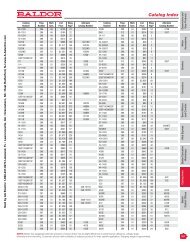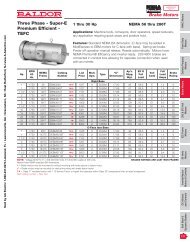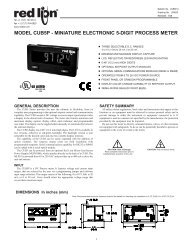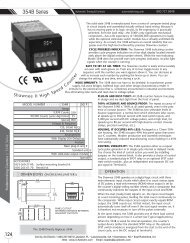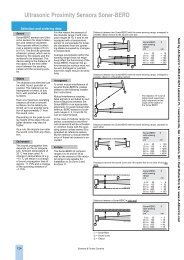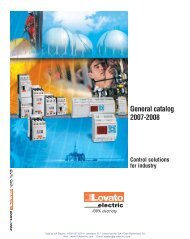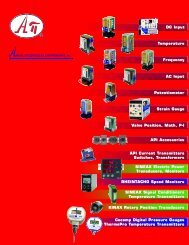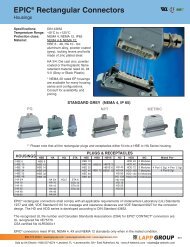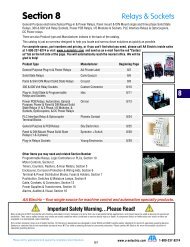G - AA Electric
G - AA Electric
G - AA Electric
Create successful ePaper yourself
Turn your PDF publications into a flip-book with our unique Google optimized e-Paper software.
Overvoltage protection for measurement and control engineering<br />
Overvoltage protection<br />
I<br />
Principles of overvoltage protection for<br />
measurement and control engineering<br />
electrical<br />
system<br />
power supply<br />
I/O-lines<br />
datainterfaces<br />
bus lines<br />
Basic classification<br />
The current standard and scope of<br />
automation technology brings with it a<br />
wide range of applications for overvoltage<br />
protection in the field of measurement and<br />
control engineering. One important prerequisite<br />
is the consistent use of coordinated<br />
overvoltage protection in all sections of the<br />
plant or building. In industry, measurement<br />
and control systems are an important area<br />
where breakdowns or malfunctions can<br />
result in high costs. As the standards covering<br />
the low control voltages do not<br />
specify many suitable parameters, the use<br />
of overvoltage protection, apart from lightning<br />
protection zoning concepts, remains<br />
to be classified according to type of signal,<br />
application circuit and type of interference<br />
voltage.<br />
Types of interference voltage<br />
The transient overvoltages coupled into a<br />
system via one or more coupling mechanisms<br />
occur as normal or common-mode<br />
interference. These are measured as longitudinal<br />
or transverse voltages and,<br />
depending on the circuit, designated as<br />
symmetrical or assymetrical voltages. (For<br />
further information, please see the chapter<br />
on “Principles”).<br />
Common-mode interference (asymmetrical<br />
interference):<br />
Common mode voltage between conductor<br />
and reference potential (earth).<br />
Mainly caused by capacitive coupling<br />
(electric field).<br />
Normal-mode interference (symmetrical<br />
interference):<br />
normal-mode voltage between supply and<br />
return conductor.<br />
Load and interference source connected<br />
in series, e.g. inductive (magnetic field) or<br />
electrical coupling (common impedance).<br />
Types of signal<br />
Binary signals<br />
These are two-core signals with a common<br />
reference potential, required for<br />
example by switches, PLC switch outputs,<br />
photo sensors, position sensors,<br />
solenoids, warning lamps, PLC inputs,<br />
etc. As a rule, these signals have a common<br />
reference potential that can be either<br />
connected or not connected to earth<br />
potential, depending on the type of protection.<br />
The coupled transient interference<br />
is primarily common-mode interference.<br />
Analogue signals<br />
Measuring circuits are normally designed<br />
as two-core current loops or voltage signals<br />
without a common reference potential,<br />
such as 0(4) to 20 mA current loop.<br />
The coupled transient interference is primarily<br />
normal-mode interference.<br />
For temperature measurements with the<br />
PT100 measuring resistors, the voltage<br />
drop in the three-core version is measured<br />
via the third core at the measuring<br />
resistor. This must be included in the protection.<br />
PT100 measurement is also available in a<br />
four-core version. The voltage drop is<br />
then measured via the two additional lines<br />
at the measuring resistor without additional<br />
power loss in the PT100 measuring circuit.<br />
The coupled transient normal-mode<br />
interference occurs between the various<br />
cores.<br />
Sold by <strong>AA</strong> <strong>Electric</strong> 1-800-237-8274 Lakeland, FL • Lawrenceville, GA • Greensboro, NC • East Rutherford, NJ www.A-Aelectric.com<br />
I.26



